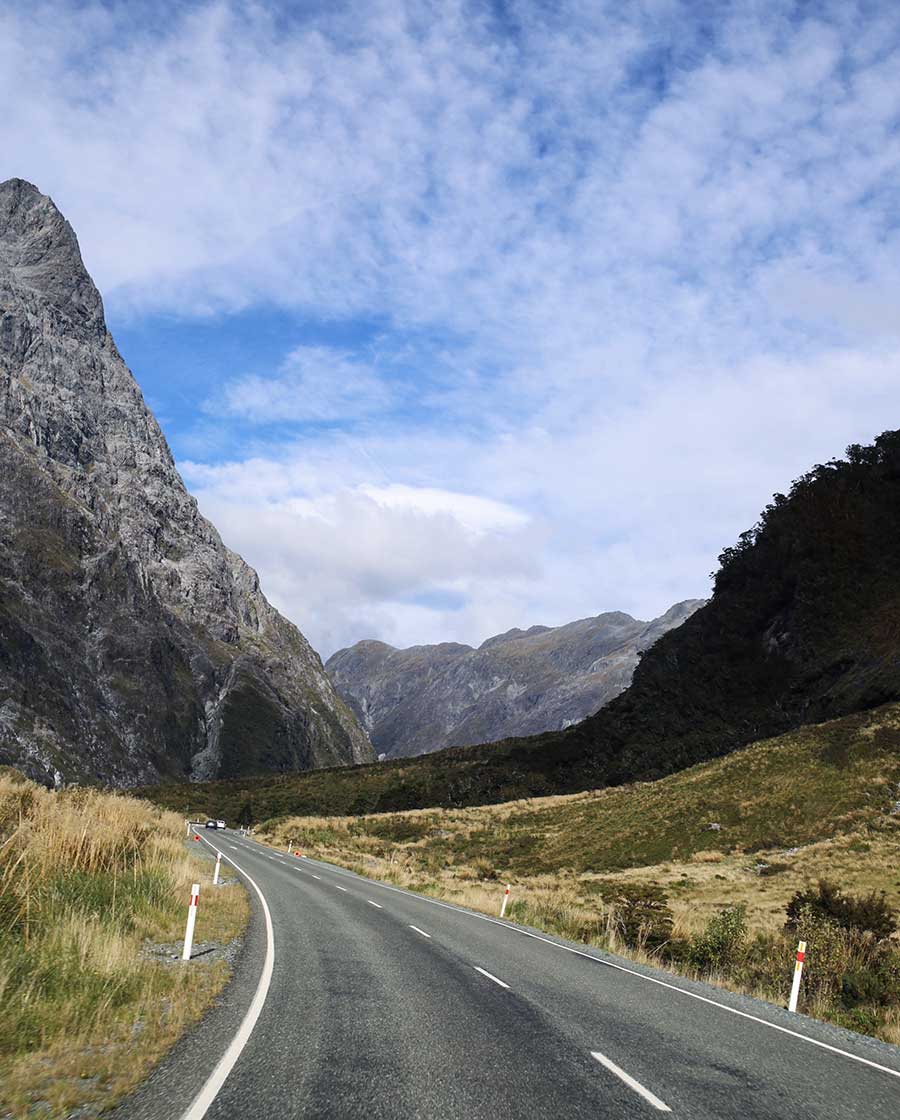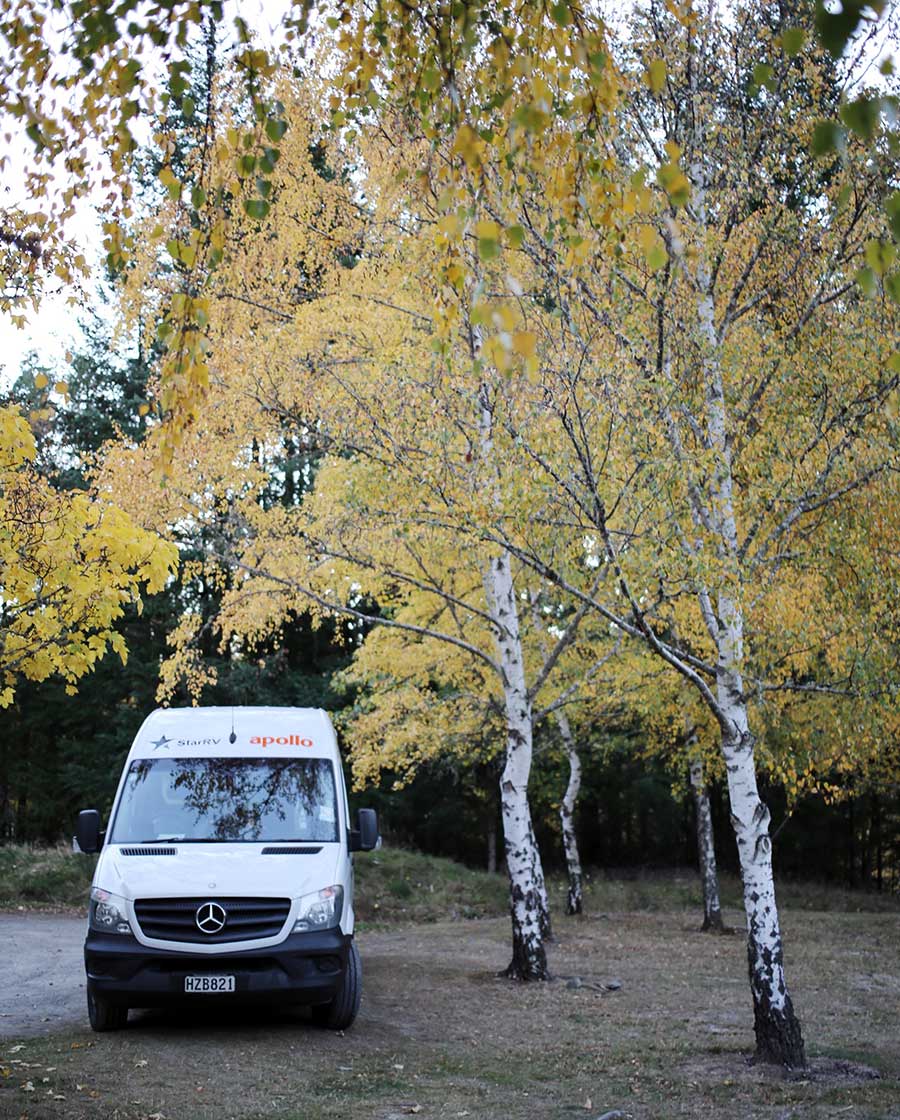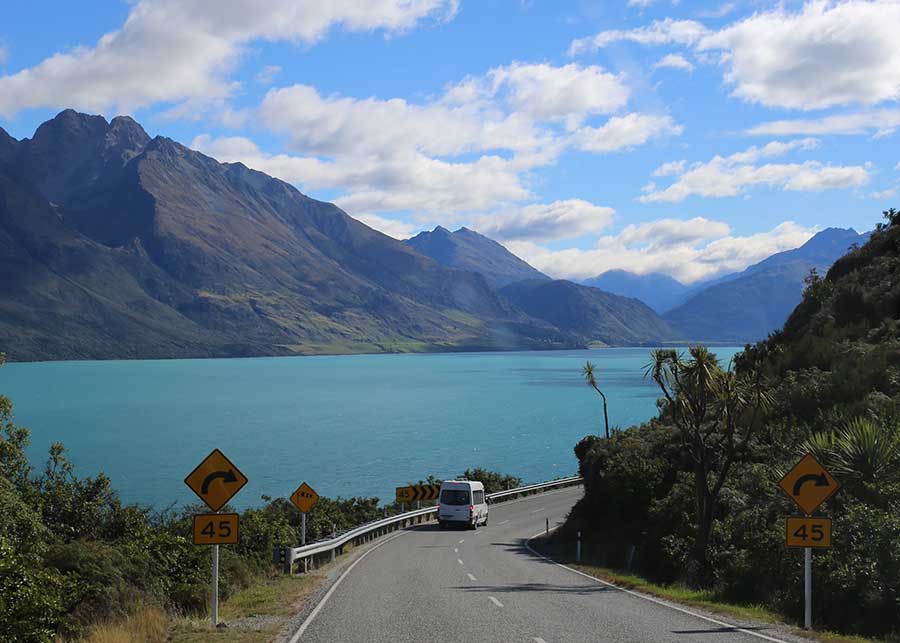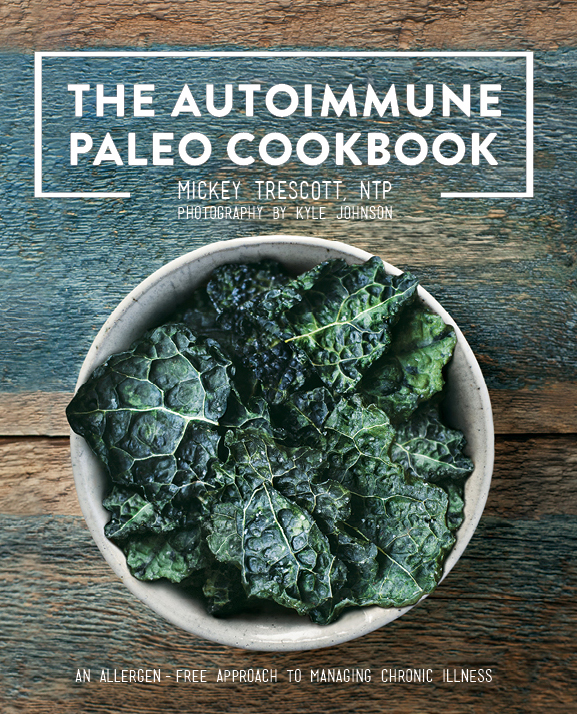If you follow my personal account on Instagram, you may know that I recently traveled “down under” to visit Australia and New Zealand on a trip promoting the metric release of The Autoimmune Paleo Cookbook. I also went to get a little rest and relaxation, which was long overdue!
The last few years have been full of transition, bringing a lot of positive lifestyle changes for me — moving from the city to the countryside, starting to work from home, and being closer to my family. One thing that was still missing from my routine though… a good, old-fashioned vacation! One of the downsides of truly loving what you do is not allowing yourself much time off, and allowing “work” tasks to fill all of your free time (like recipe testing and photography, traveling for book tours, conferences, and social media — guilty!).
Despite getting to travel a lot for work, I realized I hadn’t had an actual vacation in over two years, and that was probably the biggest factor in my feeling a lack of inspiration and burnout. I have always loved traveling, but took a large break throughout my illness and recovery, mostly because the prospect always seemed more stressful than relaxing. I decided it was time to take the leap and see if I could hack a big international trip, while staying true to my food needs.
I chose to travel to New Zealand because I already had a reason to be in that part of the world (promoting my book in Australia), and I wasn’t worried about a language or culture barrier getting in the way of being able to take care of my dietary requirements. I wanted to play it safe and see how things went before getting too adventurous!
I set off to research all the options and my husband and I ended up renting a campervan for three weeks to spend driving the South Island. Looking back, it was by far the best trip we have ever taken, and having the campervan made what could have been a stressful experience a total dream. We were able to slowly make our way around the country, stopping as we needed or wherever we felt good vibes, and spending as much time as possible immersed in the beautiful scenery. I’ve never been somewhere so stunning!

Here are seven reasons why I absolutely loved traveling by campervan, and why it made for an amazingly autoimmune-friendly trip:
- I was able to be completely in control of my food. I rented a van that had a small refrigerator/freezer, sink, and cooktop inside and cooked nearly all of our meals.
- I had the freedom to pull over and rest whenever needed. There were a few times I felt super tired and we just called it a day, pulled over, and either took a nap or found a campsite for the night. Managing fluctuating energy levels was no problem!
- I was able to see remote parts of the country. As much as I used to love backpacking, it isn’t an uplifting or restoring activity for me anymore (too hard on my back and stressful to make sure I am comfortable). With the van, I was able to drive into remote locations to take shorter hikes in areas that were wild and beautiful for the full immersive experience.
- It’s affordable. I wouldn’t say renting a van is the cheapest way to travel, but much less expensive than renting a car and staying in a hotel or bed and breakfast, or even taking a tour. If you are cooking most of your own food instead of eating out, that also saves a lot of money. You can rent small vans for a more camp-like experience, or RVs that seem luxurious in comparison (we ended up with something in the middle!).
- It doesn’t get any better than experiencing a dark night sky and waking up in nature. Most often we chose to camp in the wilderness for the full experience, and woke up listening to an incredible bird symphony or the ocean.
- I realized what possessions I really needed/missed, and which ones I didn’t. I developed some extreme gratitude for my fully equipped kitchen and deep-freezer storage back home, while I came to the realization that I don’t need to have a lot of “stuff” to be healthy, happy, or enjoy myself.
- It slowed me down. I found that by driving I was able to see and appreciate so much more than direct or quick ways of traveling. I loved stopping for hikes or in towns on a whim, asking locals for recommendations, and having a few hours or more to ruminate on a plan before reaching a destination.
Traveling by campervan is not a traditional “lay on the beach and do nothing” kind of vacation. It takes a lot of work to research, plan, and execute this kind of travel, especially with dietary restrictions, but it is so rewarding!

Preparing for cooking in the van
There were a few of things I did to ensure that cooking in the campervan was going to be safe for me as far as cross-contamination (assuming that prior renters had been cooking and eating gluten and other foods in the van and that it had not been cleaned to my standards).
First, I took stock of what the van had in terms of cooking equipment, and then purchased some additional tools to use. My van had a very small frying pan that was old and not very clean, so I purchased a larger one as well as some containers for storing leftovers, a small cutting board, some wooden cooking utensils, and a small paring knife. All this cost about $75, and was a small price to pay for peace of mind and ease of use.
Second, I bought new sponges and cleaned everything in the van prior to using—plates, mugs, silverware, etc. I wanted to make sure everything had a thorough bath and was ready to go.
Third, I picked up some ingredient essentials after we picked up the van. On my list were things like coconut oil, white rice (one of my successful reintroductions), sea salt, olive oil, sweet potatoes, apple-cider vinegar, dried fruit, and herbs and spices to cook with on the journey. I’m glad I did this, as it turned out some of these ingredients were hard to come by on the road.
 How I ate on the trip
How I ate on the trip
I ate simply and safely throughout the duration of the trip. I took full advantage of my reintroductions and “gray area foods”. Although I think someone highly motivated could be successful eating on the Autoimmune Protocol while traveling this way, having options like nuts, seeds, eggs, white rice, and potatoes make eating on the road much easier.
Most of my meals consisted of ground meat, sautéed vegetables, and a starch like white rice, potatoes, or sweet potatoes (here and here are some examples). For breakfast we ate bacon and eggs, usually over a bowl of leftover vegetables from the night before. Snacks were nuts, seeds, and/or fresh fruit. It was very simple eating, but safe and satisfying!
One thing I found traveling around the South Island of New Zealand was that there was not a very wide variety of fruits and vegetables, and almost nothing organic, most likely because I was in very rural locations. There was one shop I found that sold kombucha and fermented vegetables, but for the most part I went without those little luxuries.
I was surprised to find great quality, small-batch chicken stock on a couple of occasions, as well as some fantastic grass-fed meat (I ate a lot of lamb!). This was the benefit of having the little freezer in the campervan—when I found a treasure trove of broth and meat I had it stuffed for the week ahead!

The next step
This trip really changed how I view traveling with chronic illness. While there will undoubtedly be places in the world that are incredibly difficult to visit because of dietary restrictions, I feel much more confident that I can effectively plan and execute another big trip. Not only did it feel great to be healthy enough to enjoy a long trip like this, but it was an additional win to come home feeling equally healthy and restored.
Now that I’ve convinced you that traveling by campervan is absolutely compatible with the rest and food demands of #aiptravel, where are you going to go first? On my short list for road trips—Patagonia or Iceland!

















24 comments
This is lovely, Mickey! My husband and I spent the past two years living and traveling in a small RV–and he has an autoimmune disease. It helped his body immensely to rest when he needed it and to be able to go with the flow of life (having your house with you really takes away a lot of the stress of travel!), and it also gave us the time and space to think about stress and how it affects our bodies and minds. I am so glad to hear that your trip gave you the rest and renewal you needed. Thank you for sharing your trip tips and encouraging others to pursue travel and adventure in a way that is compatible with autoimmune disease!
Tricia–thanks for the comment. I checked out your site, what an awesome journey you two have been on! Wishing you two the best 🙂
Mickey
Thanks so much for posting this. I’ve been thinking that camper vans/rv’s would make travel for celiacs so much easier, even here in the U.S. The thought of traveling to NZ or AU though would be amazing!!!
Margo–DO IT!! xx
I actually planning this same trip right now for next year! Where did you get your Campervan from? It’s so great to see that you had a great vacation and stayed healthy and happy.
Hi Emma! We rented from Star RV. Beware of the cost of insurance when renting in NZ, that was one expense we were not prepared for. Otherwise we had a great experience!
Mickey – you forgot #8: the Kiwis and Aussies LOVE meeting fellow AIPers from the northern hemisphere. We look forward to seeing you down under again soon (with Angie next time!) <3
LOL! Thanks for voting me in Joanna!
Joanna! OH Thanks for reminding me! I loved visiting you too, and I hope to get her on the plane with me next time!
Great article! My family of 3 is about to renovate a 1973 26ft Airstream Argosy to live in full time. I’m AIP and the rest of my family is WAPF and we’re hoping to travel and work/homeschool starting next year. This is a great encouragement to get on the road!
Amanda,
Wow, how cool! Good luck and keep me posted how it goes!
Man, this is great. I went to New Zealand last winter and hitchhiked across both islands. It was by far the most incredible experience of my life. After I got back, however, I got really sick and am now likely on the verge of getting diagnosed with Hashimoto’s. This is the perfect article for me to stumble on as I’ve been a bit down about my situation for a while. Gives me all kinds of hope that I can travel again!
KB, hope you recover soon and can get back to traveling!
So you can do nuts and seeds now? I thought AIP involved no nuts, seeds, or legumes? Maybe that’s just the elimination phase? I’m a bit confused, though, so if you could clarify, I’d appreciate it. Thanks.
Hi Mary! The Autoimmune Protocol is an elimination diet with a reintroduction phase, so once a person figures out which foods work for them, they are back in the diet. You are correct AIP does not include nuts, seeds or legumes, but I have reintroduced some of them successfully. I did my original elimination diet nearly five years ago!
[…] Campervans: Autoimmune Wellness shares why this is a great option for people on a healing diet and how to do it successfully. […]
We are travelling 🇦🇺 Australia in a 4wd and caravan for 12-18 months. Packed up our whole house and live the life of nomads! Our kids are in distance education. I’m on the AIP and I don’t have any more problems on the road as I do at home. Ive even managed to keep my Kombucha going – I just seal the lid as we travel and get it out as soon as we stop! It’s completely doable in Australia too! Just stock up in the bigger towns! Great article!
Karen,
Lovely to hear of your travels – good for you! Enjoy your trip, and wishing you continued health 🙂
I started AIP in July of 2017, and in October my husband and I became full-time RVers. Our 25′ Winnebago is a simple home but it’s perfect for traveling with chronic illness and dietary restrictions. This lifestyle has helped me heal for sure! I make my own schedule, cook my own food and don’t have to worry about forgetting things when I pack. Glad you got to try the lifestyle too.
Love hearing this Jaime!
This is SO inspiring. One of my husband and my favorite things to do was/is travel. That’s before this Hashimoto’s reared it’s ugly head and I went AIP. But we’re working on making it possible and fun again.
This is a great idea and just the motivation I need!
You can do it Kelly!
Would you be willing to share any updates/planning/vehicle setup regarding campervan travel that you have experienced? With autoimmune disease, expenses, and the pandemic, my partner and I have not traveled yet, although are eager to experience!
Hi R! I don’t own a campervan, so I don’t have any specifics to share. This post was made after my partner and I rented a campervan in New Zealand. It was a standard one with a small kitchen, bathroom, and table that converted into a sleeping area. Hope it helps!